Best Butter Cream Frosting For Cake Decorating
The path to pretty cake is paved with frosting. Just as an artist creates an infinite array of colors and textures using paint, bakers do the same with sugar, butter, eggs, and chocolate (sometimes literally). Indeed, a celebratory layer cake like Vanilla Birthday Cake needs a sweet swath of frosting for both looks and taste.
When you venture into the world of homemade frosting, you may find that the choices are surprisingly complex, and even — at times — a little confusing. For example, there's not two, not three, but at least four different buttercreams named after a different European country. Not to mention an American version too.
Even beyond buttercream, there's fondant and fudge, sour cream and cream cheese. How are you supposed to decide which one to use on your cake?
That's what we're here for: to lay it all out so you can choose the frosting that's right for your baking. Below, we've put together a guide to the most common types of cake frostings (plus a few wild cards), with tips on how they differ in taste, preparation, and preferred application.
But first: Why should you make your own frosting?
As vocal proponents of home baking, our simplest answer is … because you can! Making something from scratch is one of the most satisfying feelings around; any imperfections are quickly overshadowed by the fact that you spent time and energy to make something delicious with your hands.
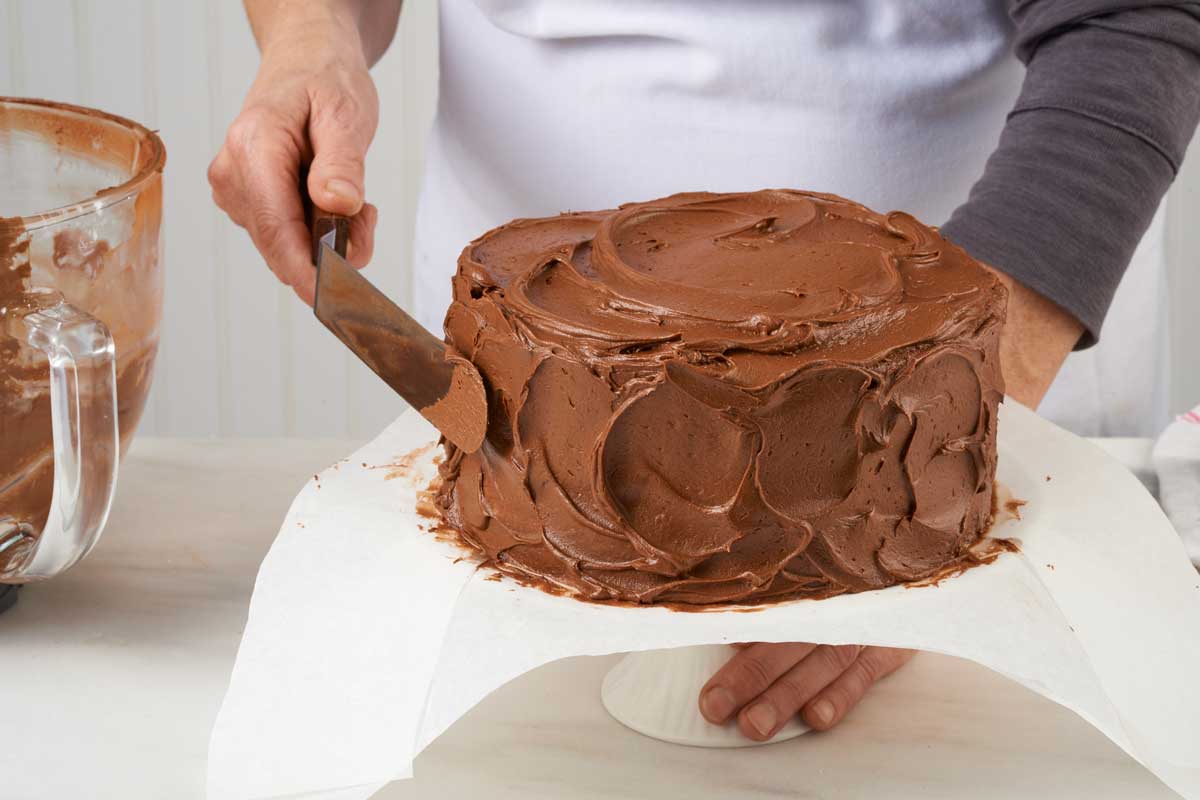
Then there are the ingredients: If you want to be in control of the quality and variety of ingredients in your baking, going homemade (and ditching the preservatives in commercial frostings) is your best bet.
And finally, there's the simple fact that homemade tastes better. What store-bought frostings offer in convenience, they often sacrifice in taste. They're typically one-note in flavor: sweet, and that's about it. With homemade frosting, you can choose a recipe that fits your taste and customize with your own flavors. If you like frosting that's light and airy, try Ermine Frosting. If you want to go beyond basic flavors, stir in extracts. Or if you're vegan, you can customize accordingly. (Make our Swiss Buttercream vegan with the tips at the bottom of the recipe page.)
Ultimately, preparing your own frosting is the best way to make the cake you want to eat: one with the look, texture, and flavor you're dreaming about. There are a lot to choose from, so here's a guide to the most common types of frosting.
Type of frostings: buttercream
There are many varieties of buttercream frosting, often with a nationality in their name for clarity (or confusion?). Most involve some version of sugar syrup whipped with egg whites (or whole eggs) and fat. Here's the breakdown.
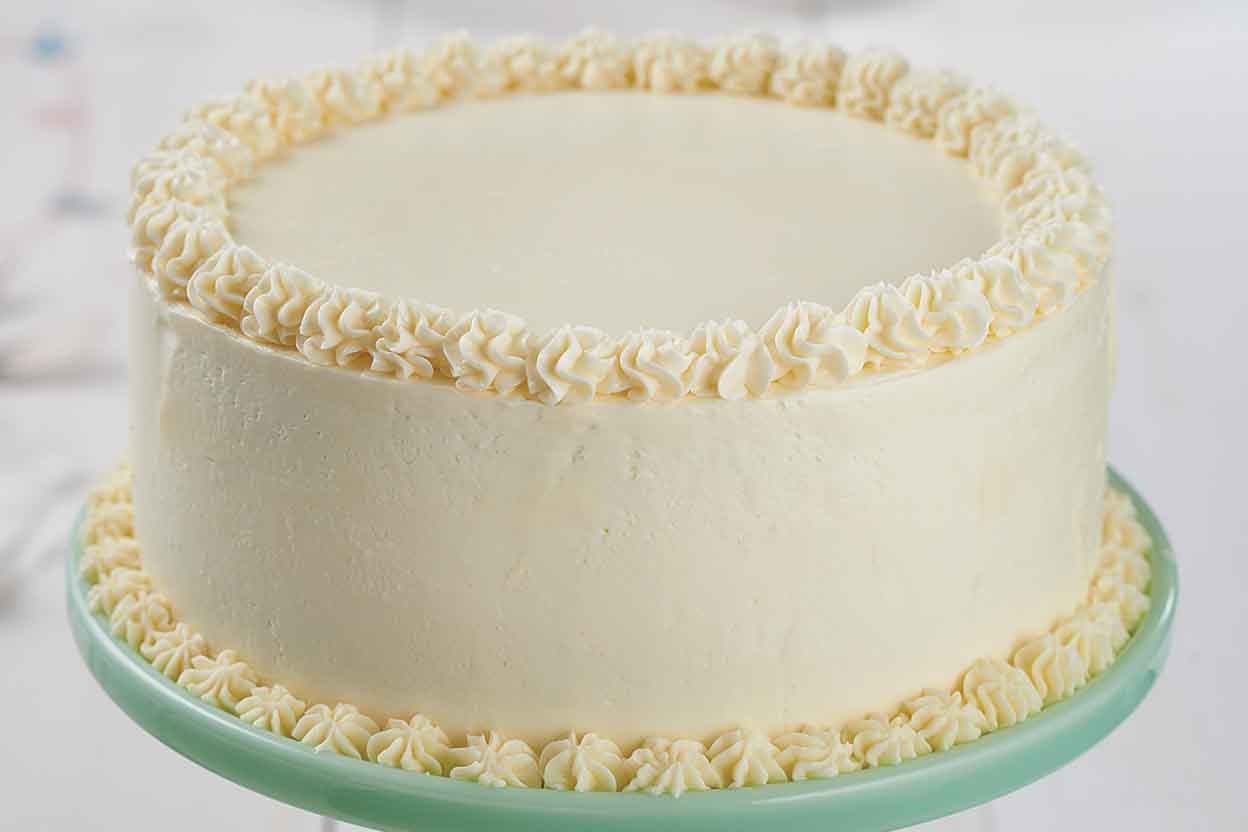
Italian Buttercream
How it's made: First a meringue is made with egg whites and sugar, then sugar syrup cooked to at least 240°F is poured in with the mixer running; once the meringue is cooled to 80°F (with the mixer running the whole time), soft butter is added, a lump at a time, until the frosting comes together.
Description: Incredibly silky and smooth; can carry infinite flavor variations; easy to work with
Good for: Piping any kind of shape, roses, or decorations
Tip: Make sure cakes frosted with this buttercream are at close to room temperature before serving.
French Buttercream
How it's made: Same as Italian buttercream, with whole eggs or egg yolks instead of just egg whites
Description: Very rich, and if you're not coloring the frosting, a very pale golden color. It has a lower melting point, because of the extra fat from the egg yolks; it also has hints of pastry cream or custard.
Good for: Piping decorations; frosting whole cakes; filling macarons
Tip: A good digital thermometer takes the guesswork out of making this.
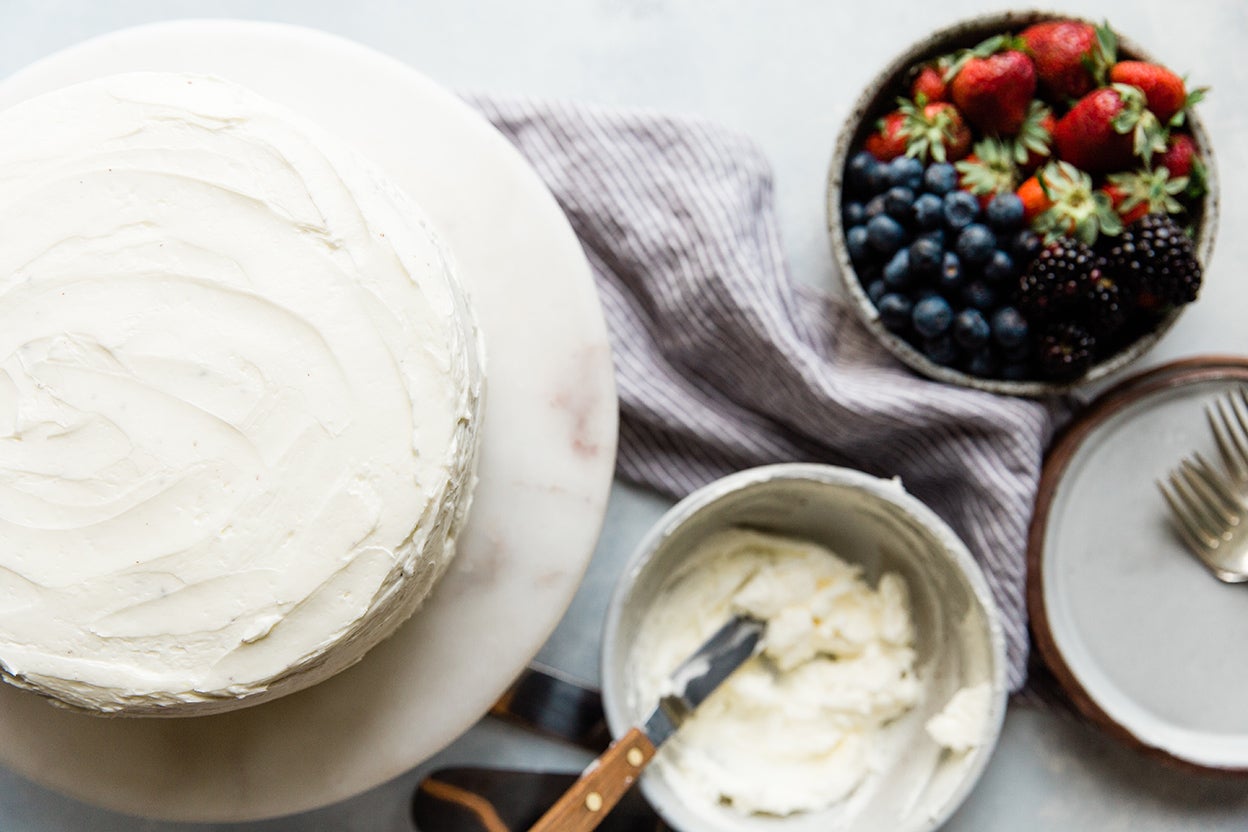
Swiss Buttercream
How it's made: Preparation is similar to Italian Buttercream; while Italian Buttercream is prepared by making a meringue and adding sugar syrup cooked to at least 240°F, in Swiss Buttercream, the egg whites and sugar are cooked together to 161°F over a hot water bath, then transferred to a mixing bowl and whipped before adding the butter a bit at a time.
Description: Similar to Italian buttercream — smooth and silky — but not quite as stable
Good for: Piping and frosting; also for bakers who are intimidated by boiling sugar syrup (although you still need some time at the stove)
Tip: This is a good frosting to start with if you've only made confectioners' sugar-based frostings up to now.
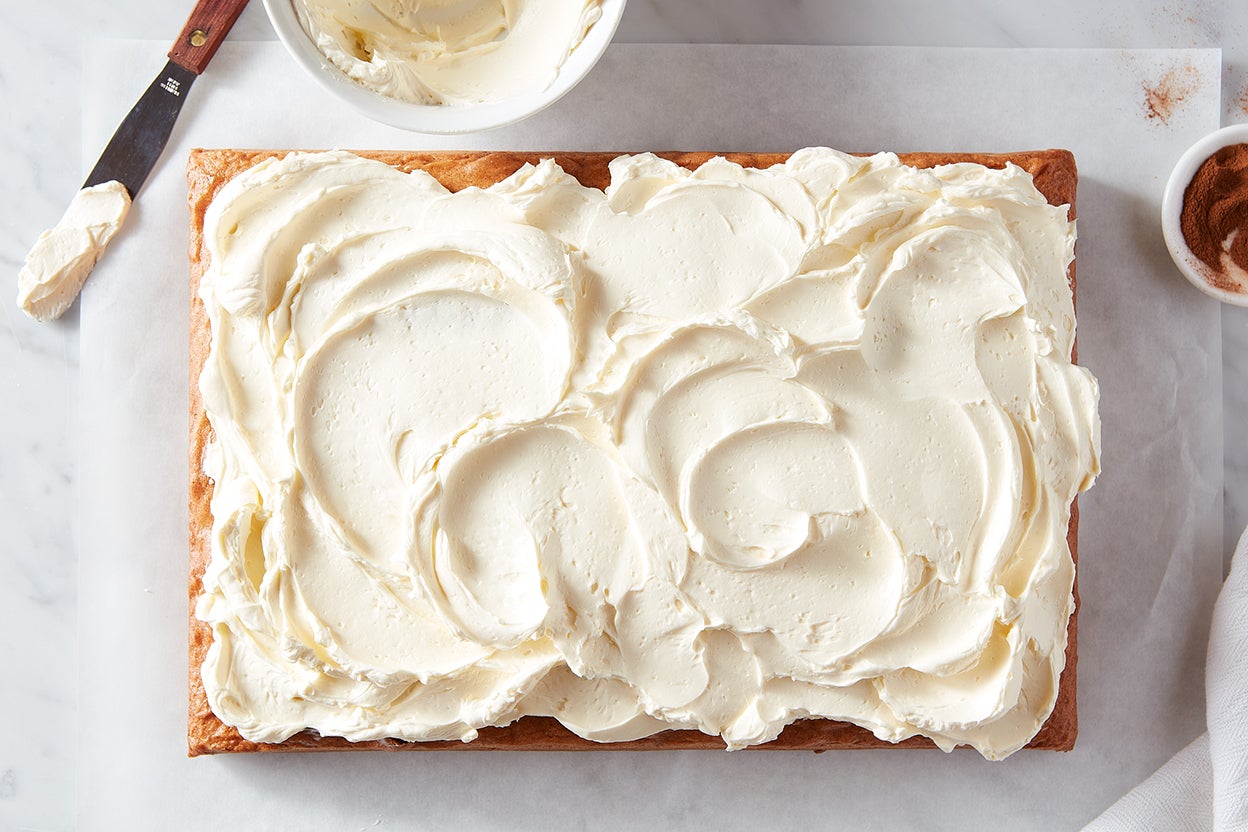
German Buttercream
How it's made: Start with a vanilla pastry cream base (made with whole eggs, cornstarch, and milk) then whip in butter.
Description: Richer but less sweet than classic American buttercream, with a silky smooth, ultra-rich texture. It's very fluffy, similar to Ermine Frosting (more on that one below!).
Good for: Layering with dense, nut-based cake for tortes, or frosting anything else you like
Tip: Beat the butter until very light and fluffy before adding the cooked base a bit at a time.
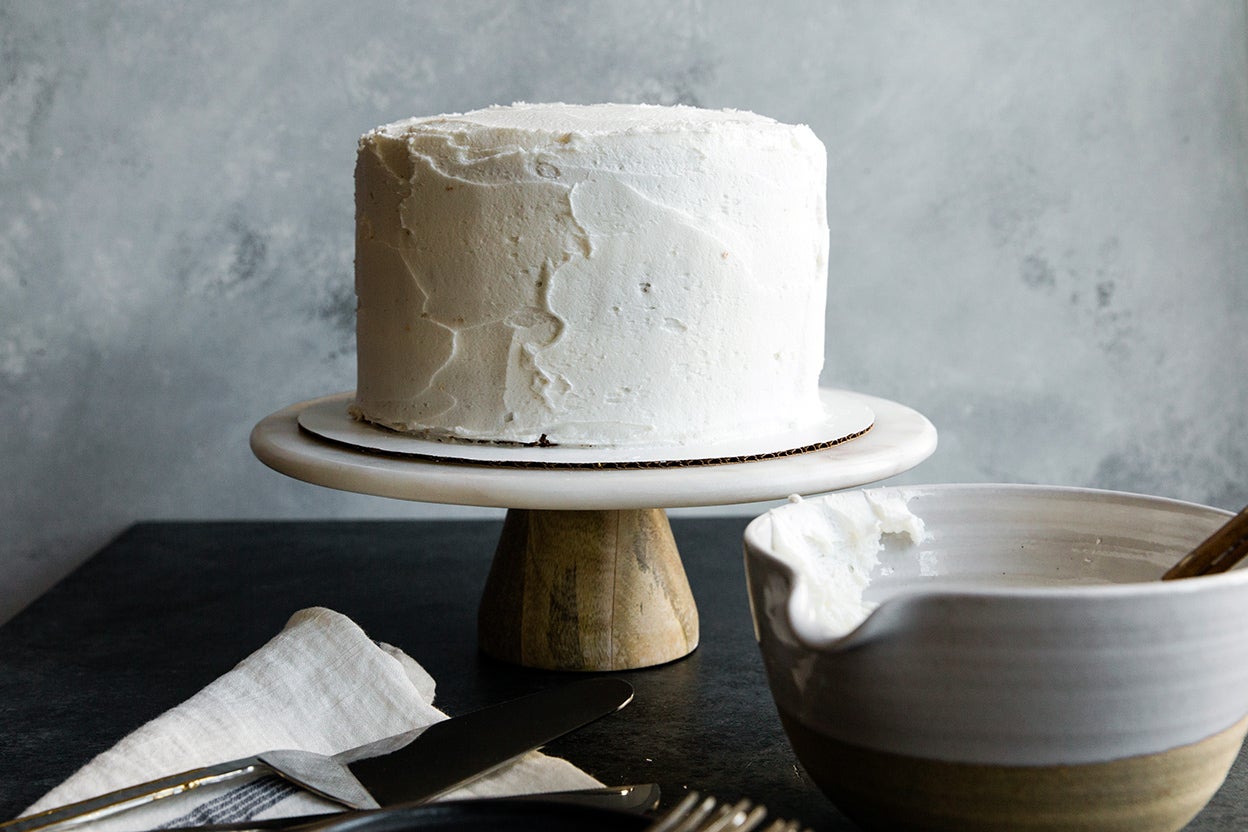
American Buttercream
How it's made: Beat together butter and confectioners' sugar, adjusting with a bit of milk or cream as needed to achieve desired consistency.
Description: For any culinary school graduate, this one doesn't count as real buttercream, as any pastry program considers buttercream to have some kind of egg base. But that doesn't mean it's not useful! The resulting frosting is very sweet and heavier than European-style buttercreams. It's also one of the simplest frostings to prepare.
Good for: Beginner bakers; anyone in a time crunch
Tip: Mix pulverized freeze-dried fruit with some of the confectioners' sugar in the recipe for an easy colorful, fruit-flavored frosting.
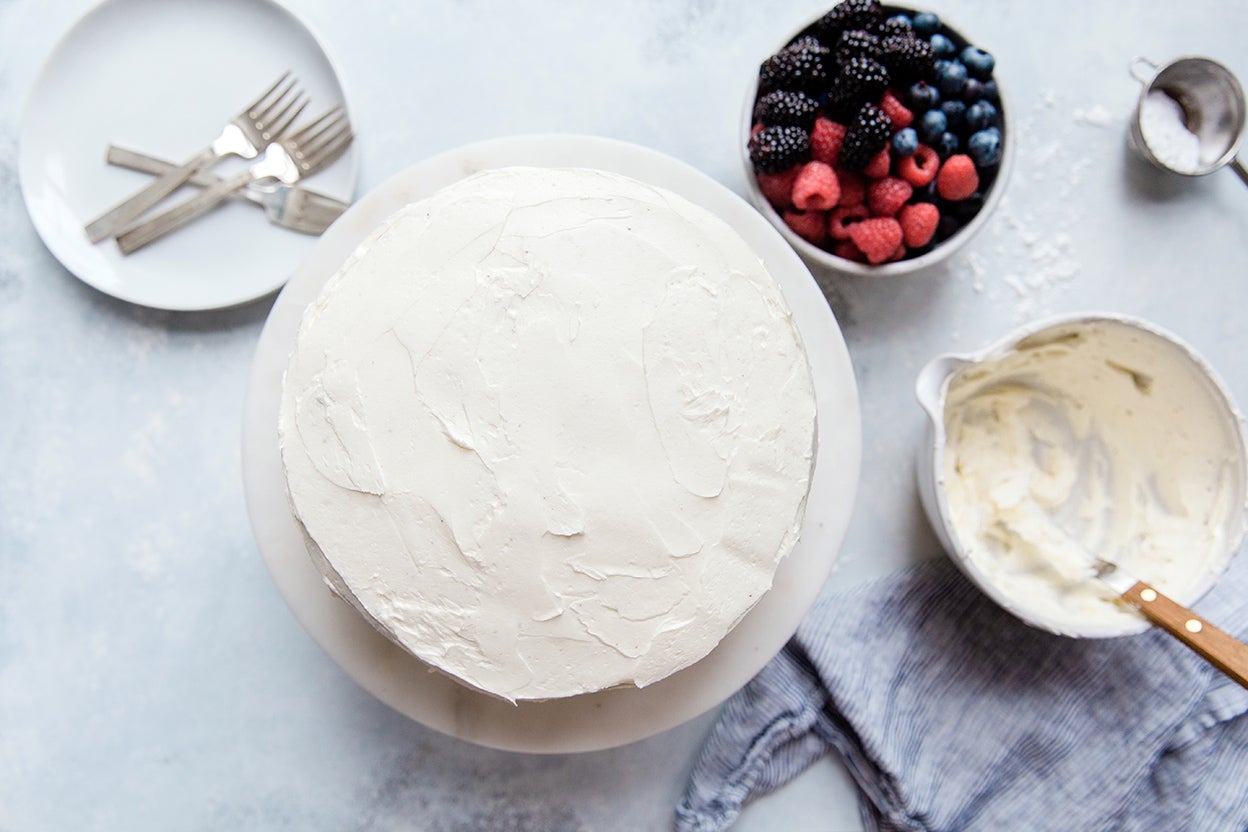
Bonus: Fluffy White Buttercream Frosting
This King Arthur recipe isn't a specific style of buttercream, but rather a shortcut mashup of Italian and American buttercreams that uses meringue powder instead of egg whites, plus both a quick sugar syrup and confectioners' sugar. It makes a frosting that's very stable for decorating, and the process isn't quite as involved as a full Italian Buttercream.
Types of frosting: other classic styles
There's a whole world of frosting beyond buttercream. The possibilities are almost endless, but here are a few of the most classic frostings to familiarize yourself with.
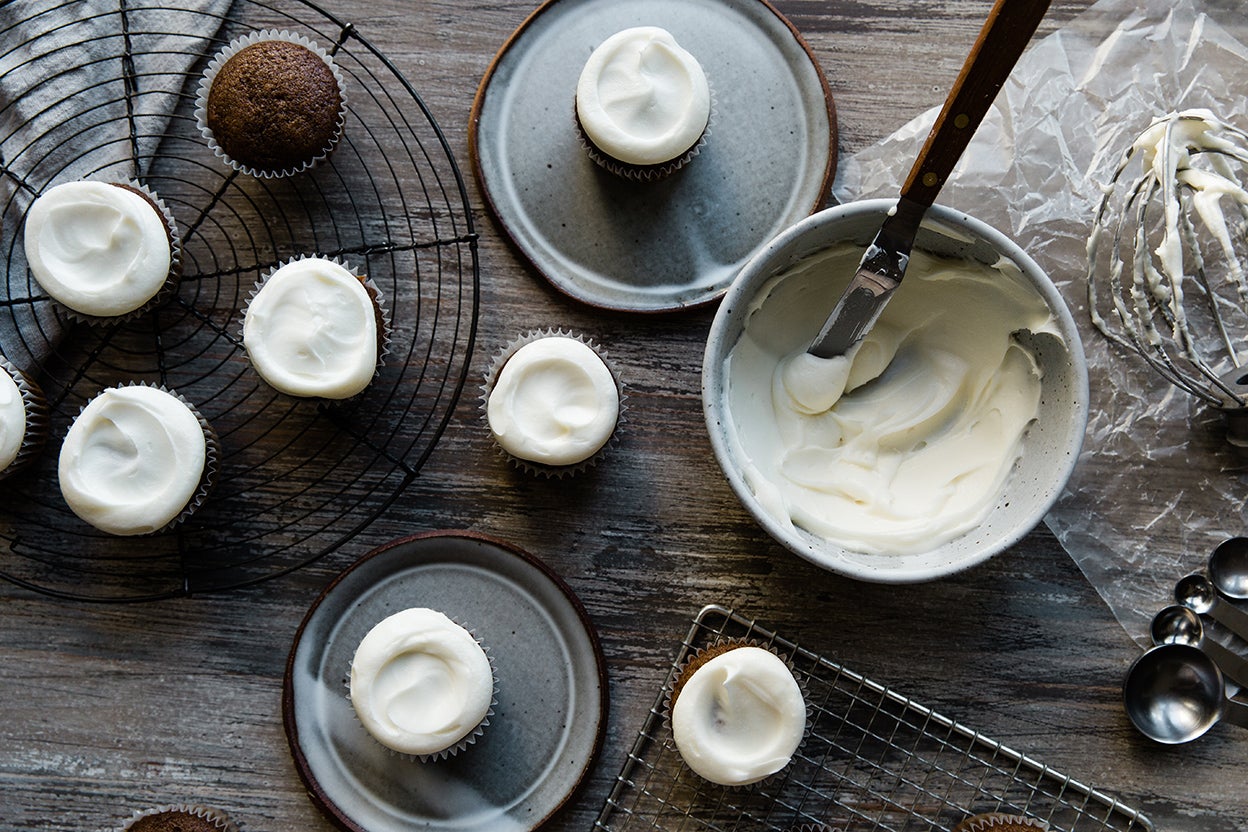
Cream Cheese Frosting
How it's made: This is a variation on American Buttercream, but subs cream cheese for most of the butter before beating with confectioners' sugar.
Description: The addition of cream cheese creates a beautiful balance between tangy and sweet, all harmonized with vanilla.
Good for: Surprisingly stable in hot weather, as well as the ideal partner for carrot, pumpkin, and apple spice cakes
Tip: For best piping performance, fill a pastry bag right after mixing, but chill the filled bag for 10 to 15 minutes to firm it up a little before piping for better definition.
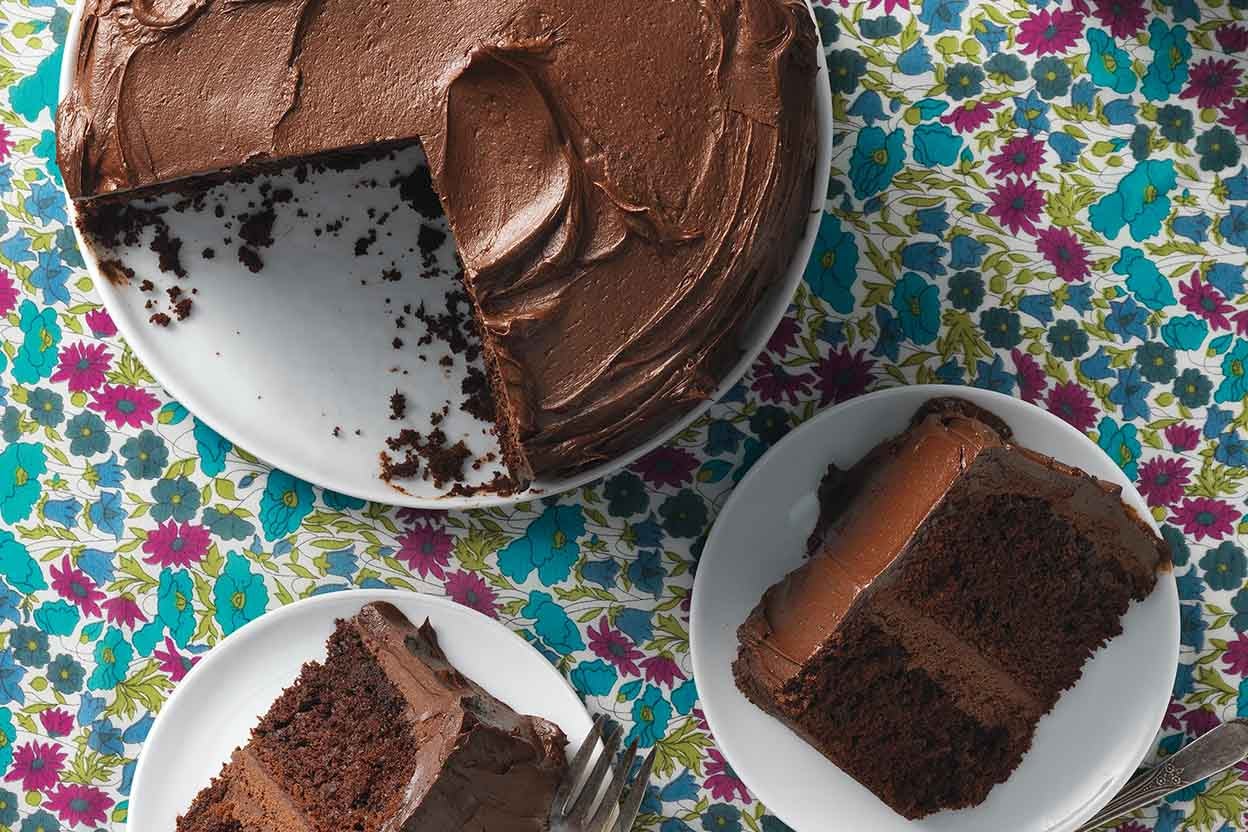
Super-Simple Chocolate Frosting
How it's made: Unsweetened cocoa and confectioners' sugar are hydrated with heavy cream, then combined with butter and more confectioners' sugar.
Description: This frosting was invented by longtime King Arthur baker Susan Reid, who was on a quest for an intensely flavored chocolate frosting. And boy does it deliver. Not to mention, it's a cinch to prepare.
Good for: Tender cakes; avid chocolate lovers; topping cupcakes; filling whoopie pies
Tip: It can be a little too soft to hold its shape immediately after mixing; let it sit for 15 minutes before using to decorate.
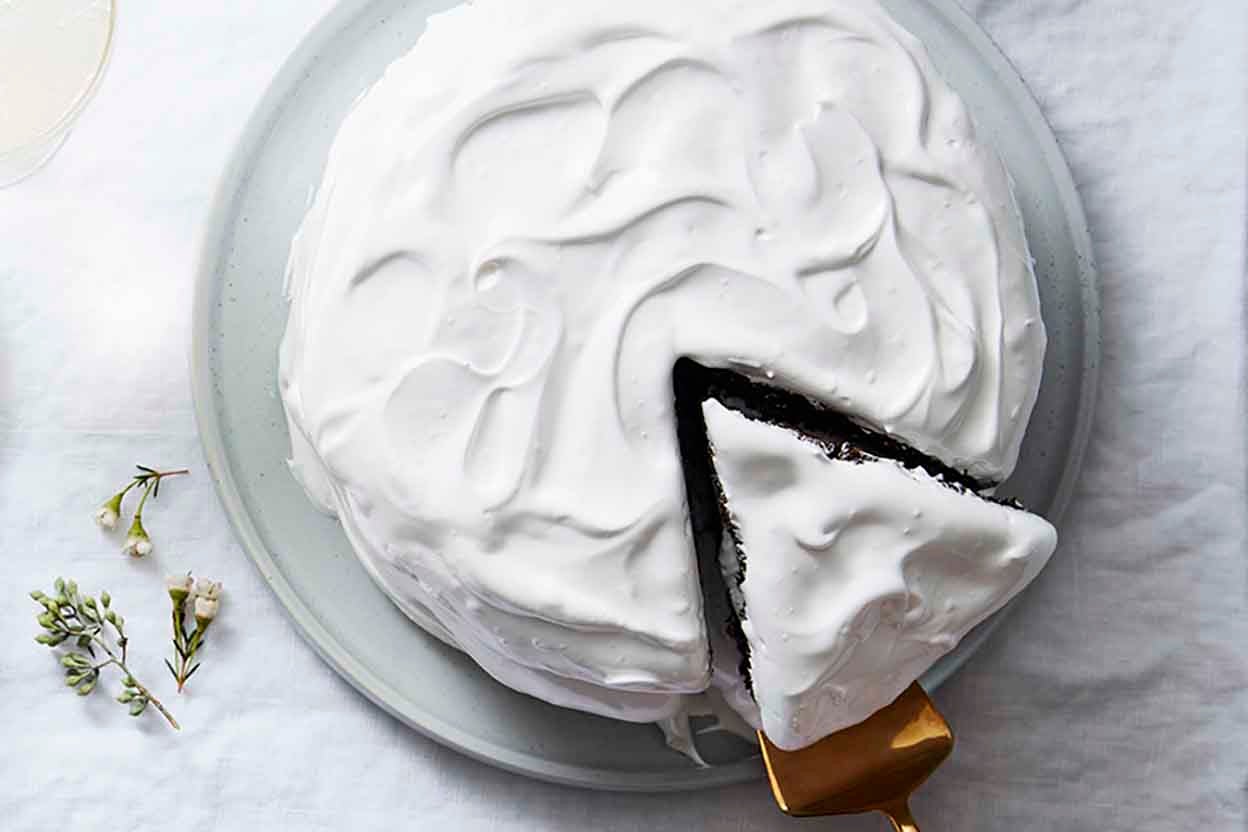
Seven-Minute Frosting
How it's made: Egg whites, acid, and sugar syrup are whipped over simmering water to create a spreadable, fluffy frosting; whipping takes about 7 minutes, hence the name.
Description: A light, fluffy meringue frosting that's similar to marshmallow spread
Good for: Marshmallow lovers; bakers looking to recapture vintage cake magic or make s'more-style creations
Tip: This sets quickly, so be ready to take it from bowl to cake to finished look right away.
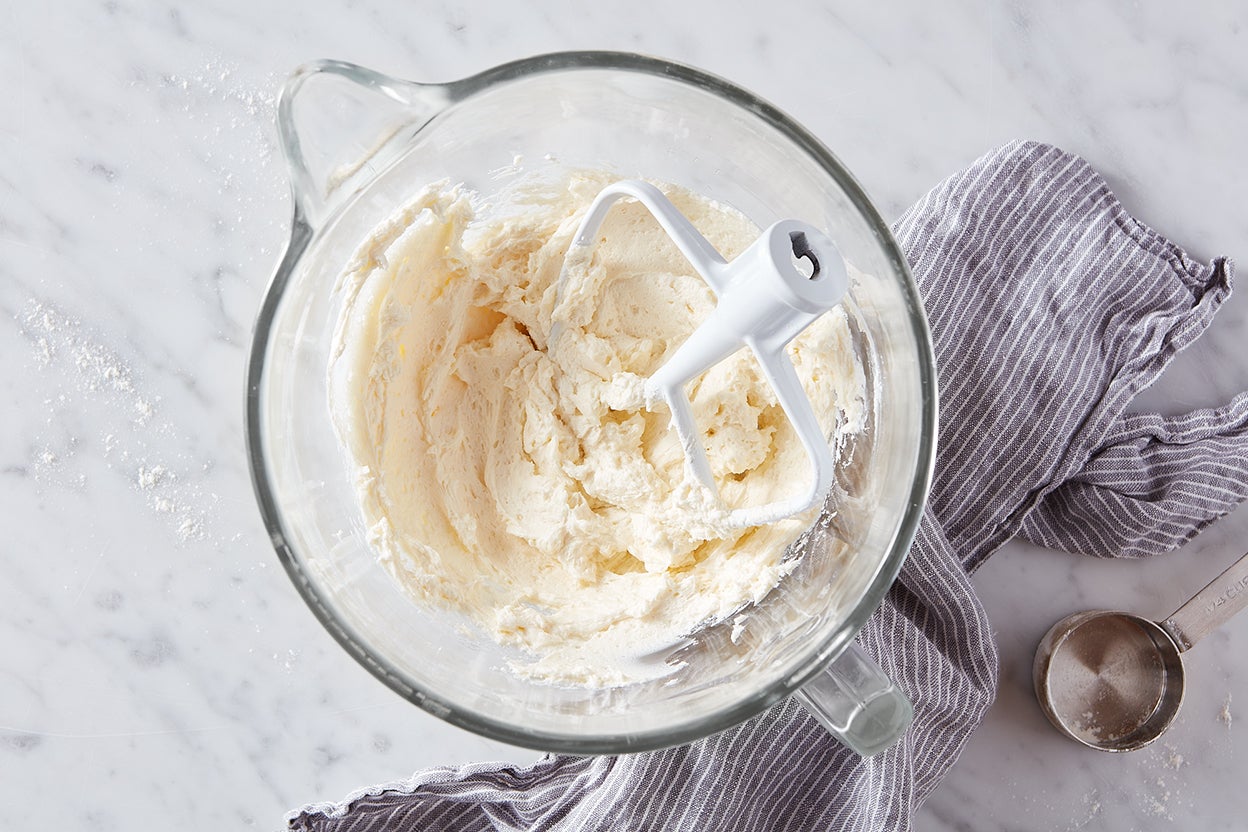
Ermine Icing (Cooked Flour Frosting)
How it's made: Flour and milk are cooked together to create a base that's combined with whipped butter.
Description: Very light and just slightly sweet; similar to whipped cream
Good for: Frosting rich, dense cakes; anyone wanting to recapture this distinct legacy flavor memory
Tip: Make sure the base comes to a full boil in the center of the saucepan before taking off the heat. If the frosting curdles when the butter is added, warm the bowl on the mixer with a hair dryer as you continue beating.
Types of frostings: wild cards
Beyond the buttercreams and classics are even more frostings waiting to take your cake to the next level. We like to think of these as wild cards — maybe not the most common, but delicious and useful nonetheless.
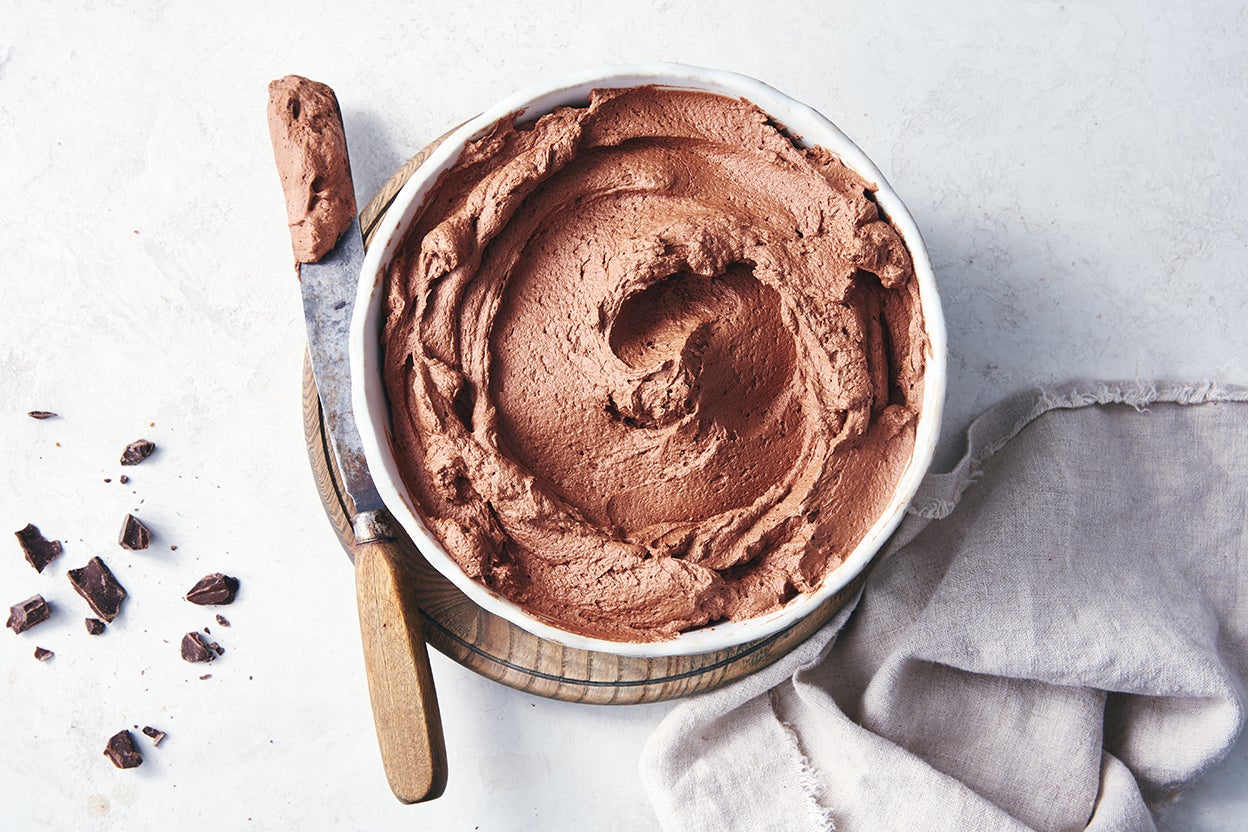
Whipped Chocolate Ganache
How it's made: Equal amounts of chocolate and simmering cream by weight are combined, cooled, then whipped to make a spreadable frosting.
Description: A mousse-like, rich chocolate frosting that swirls nicely
Good for: Layer cakes and cupcakes; can work well as both a cake filling and exterior frosting
Tip: Let hot cream and chopped chocolate sit together for 5 minutes to soften before stirring; use right after mixing (difficult to soften and use later without leaving at room temperature for an hour).
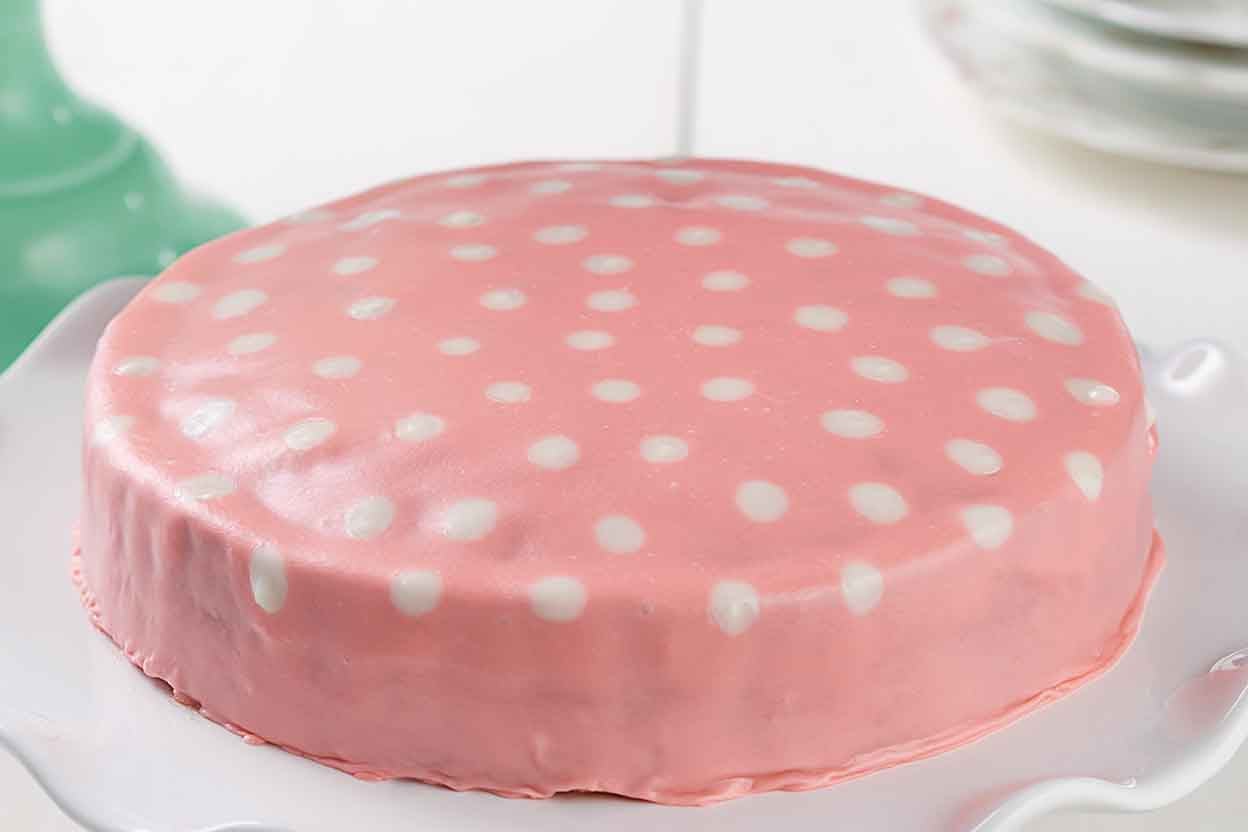
Poured Fondant Icing
How it's made: Lightly cook a base of confectioners' sugar and dairy to create a smooth mixture that can be poured over cakes before setting smooth and shiny.
Description: Fondant is more about style than flavor — great for creating an ultra-smooth, professional-looking finish, but not the tastiest option.
Good for: Treats that need to travel (i.e., cupcakes in lunchboxes or treats left in porch drop-offs)
Tip: Use to cover cake layers or cupcakes for a smooth, colorful base, then decorate on top with piped buttercream or flowers for final details.
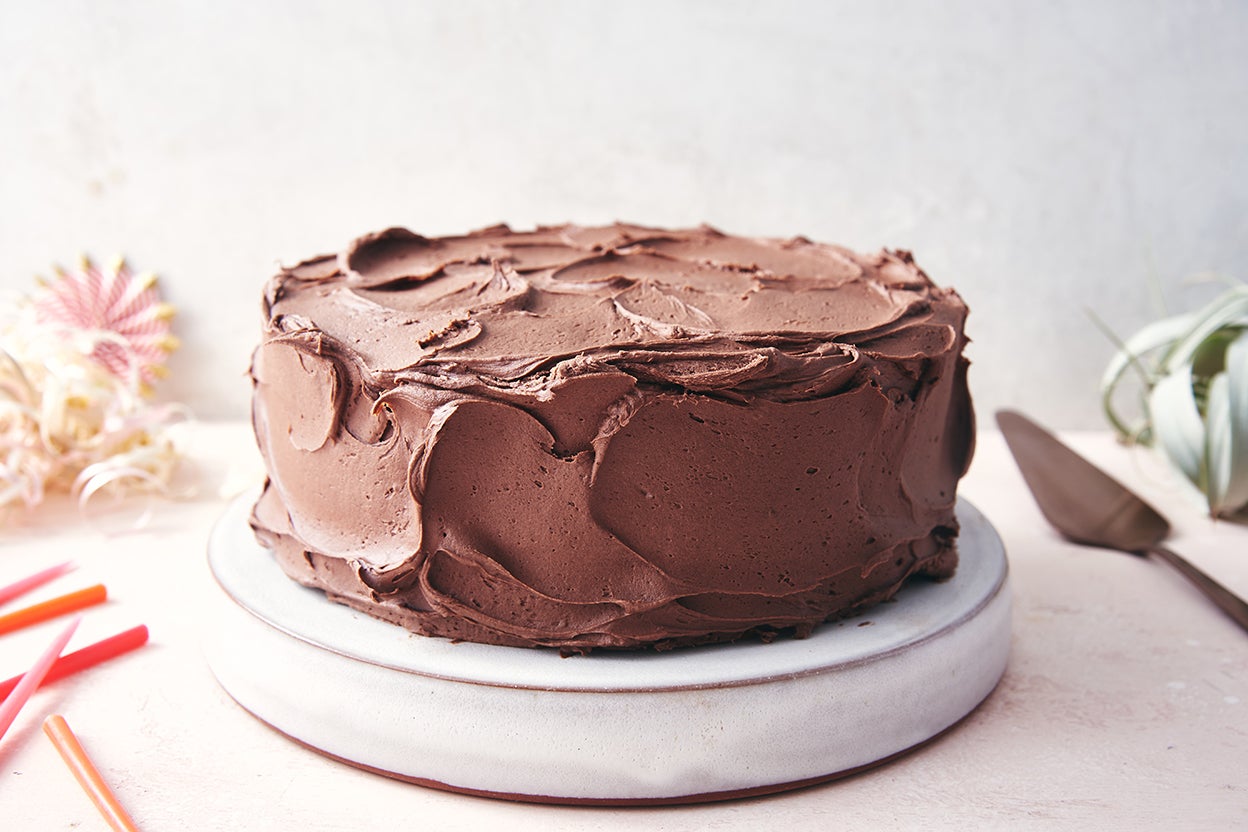
Chocolate Sour Cream Frosting
How it's made: Melted chocolate, butter, cocoa, confectioners' sugar, and sour cream are combined to make a smooth frosting.
Description: Deep chocolate flavor, great spreadability, and a sophisticated tangy note that highlights the vanilla
Good for: Devil's food or vanilla cakes; frosting cupcakes
Tip: Use right out of the mixing bowl: this frosting sets as it sits, almost like a soft fudge.
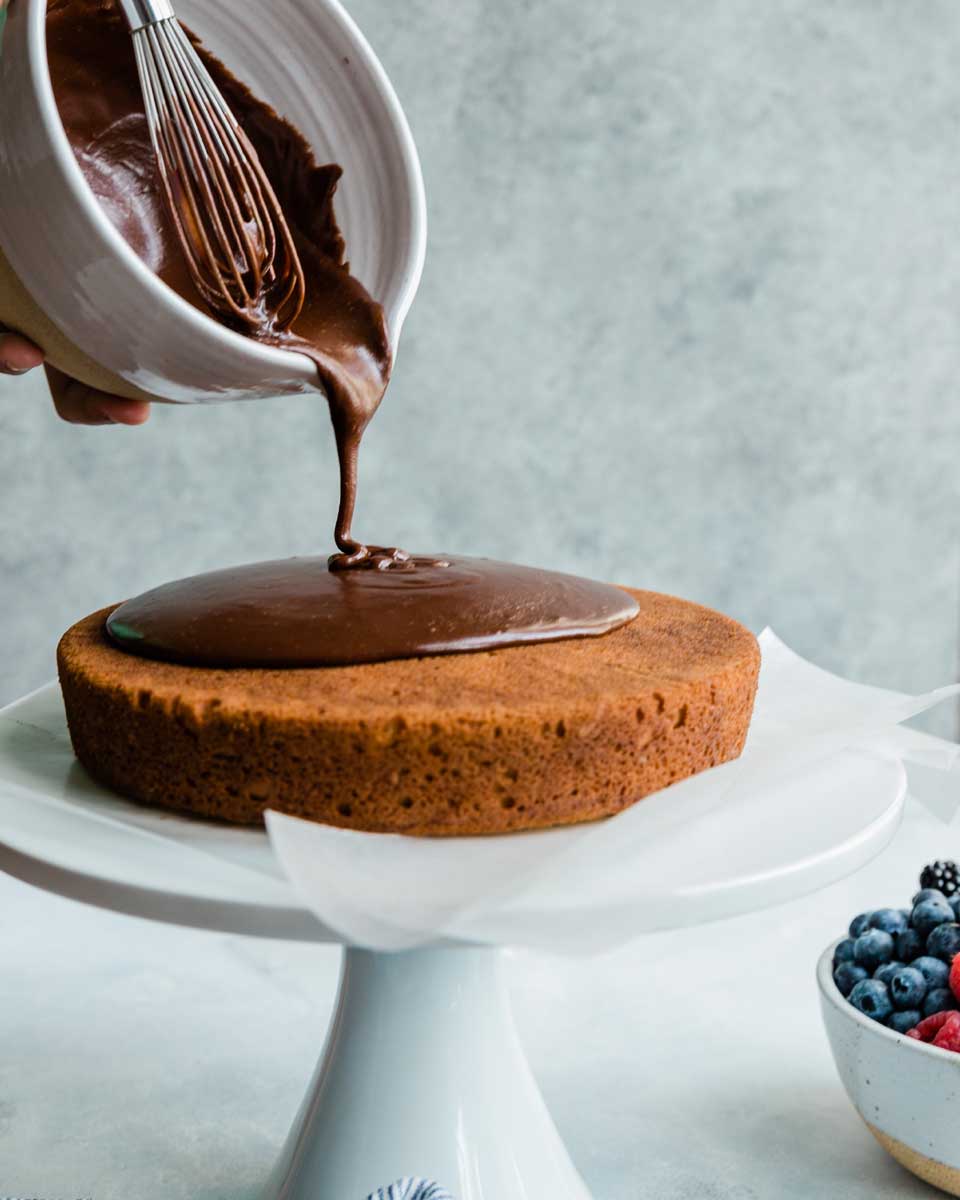
Fudge Frosting
How it's made: Butter, dairy, and confectioners' sugar (sometimes brown sugar, for caramel frosting) are cooked together, then vanilla is added. The frosting is poured over cakes, rather than spread.
Description: Rich and dense, this frosting is more like a super-thick glaze rather than a light, fluffy topping.
Good for: Sheet cakes; brownies; filling in layer cakes
Tip: It can be remelted in the microwave if it starts to set too soon, or if you have some leftover you want to use later.
Best frosting for: beginner cake bakers
If you're a cake baker just looking for the basics, American-style buttercream is a good place to start. No need to worry about syrup temperature or whipping meringue: just cream together butter (or shortening) and sugar, and you're basically set. Try our Easy Vanilla Buttercream Frosting or Quick Buttercream Frosting the next time you're baking a cake.
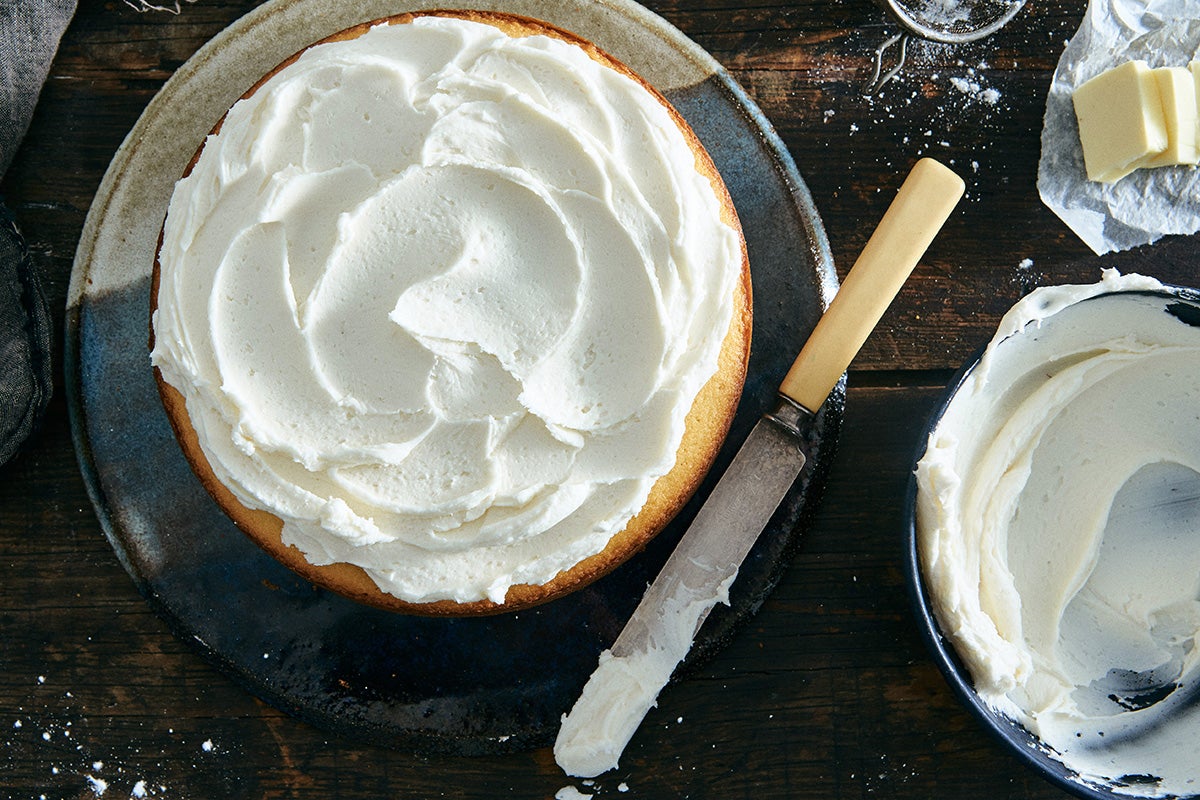
Another option is Super-Simple Chocolate Frosting. (Can you tell by the name?) It's similar to the American buttercreams listed above, with a rich chocolate twist.
Best frosting for: advanced decorating
With their silky-smooth textures, Italian Buttercream and Swiss Buttercream make excellent choices for more intricate designs. They spread easily, enabling you to create a flawless blank canvas out of your cake, and they also hold their shape well, so piped flourishes stay in place.
Best frosting for: piping on cupcakes
If you're using a pastry bag to top cupcakes, you'll want to choose a frosting that's sturdy and will hold its shape. For these reasons, Italian or Swiss Buttercream are once again great choices. In addition, Super-Simple Chocolate Frosting pipes well and makes a nostalgic complement to basic vanilla cupcakes.
Best frosting for: people who don't like sweet frosting
It seems like everyone has a friend or family member who doesn't care for frosting because it's too sweet (or maybe that's you!). For those looking to steer clear of a recipe that might make their teeth ache, Ermine Frosting is a good choice. With an airy texture that's just lightly sweetened, it doesn't hit with a ton of sugar.
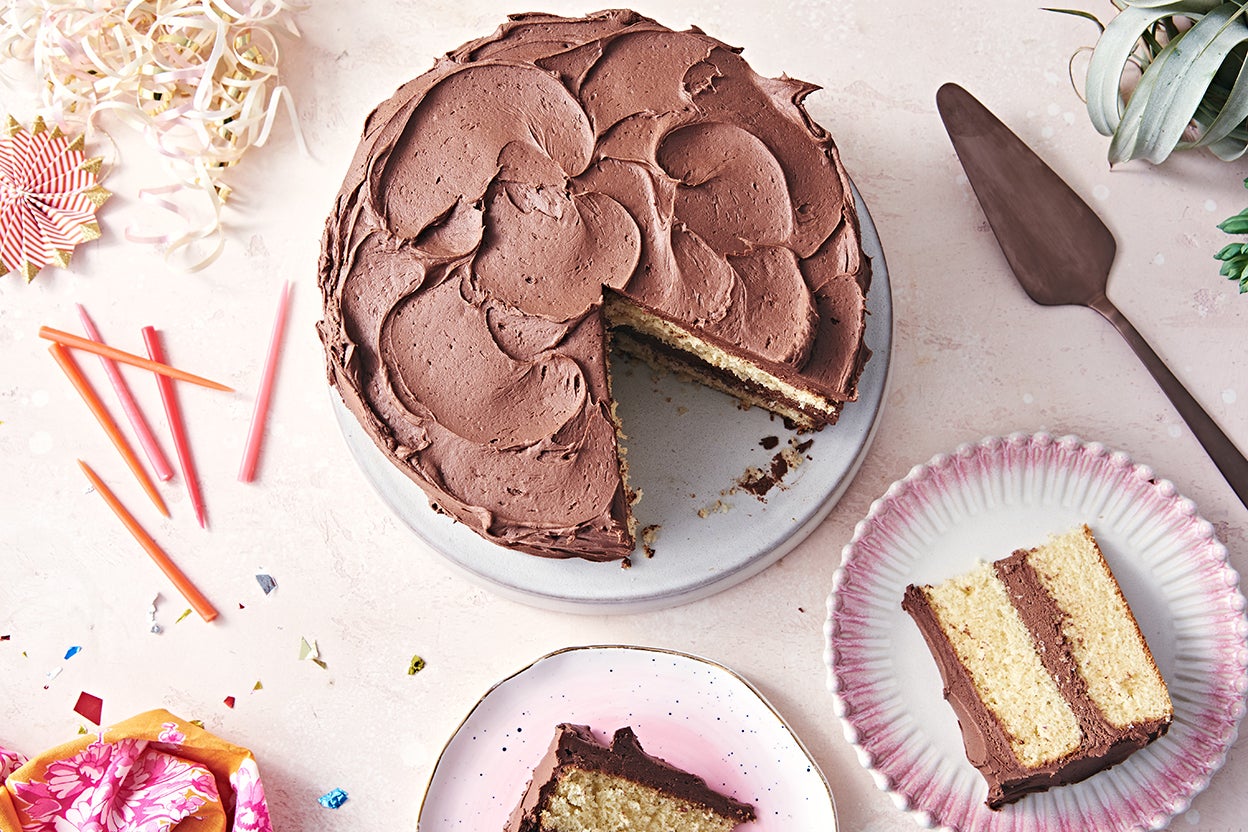
In addition, chocolate frostings make great picks, as the bitterness of chocolate tends to balance out some of the frosting's overall sweetness. With robust chocolate and tangy sour cream, Chocolate Sour Cream Frosting is a particularly good choice. You can also try making Whipped Chocolate Ganache Frosting with bittersweet chocolate, instead of semisweet chocolate as the recipe calls for, to decrease the total sweetness.
Finding your favorite frosting
WHEW. That's a lot of very sweet ground to cover. But if anything, it's an excuse to start baking some cakes so you can try out all these frosting options. As you become more familiar, you'll get to know your favorite styles and when to use them. And be rewarded with a lot of beautiful (and delicious) cakes along the way.
If you're looking to improve your overall cake-baking —no matter your skill level —see our post on how to step up your cake game.
Many thanks to pastry chef and King Arthur cake queen Susan Reid for sharing so much of her knowledgeable insight for this post.
Cover photo by Shilpa Iyer
Best Butter Cream Frosting For Cake Decorating
Source: https://www.kingarthurbaking.com/blog/2021/04/05/a-breakdown-of-every-cake-frosting
Posted by: barclaygrance.blogspot.com

0 Response to "Best Butter Cream Frosting For Cake Decorating"
Post a Comment